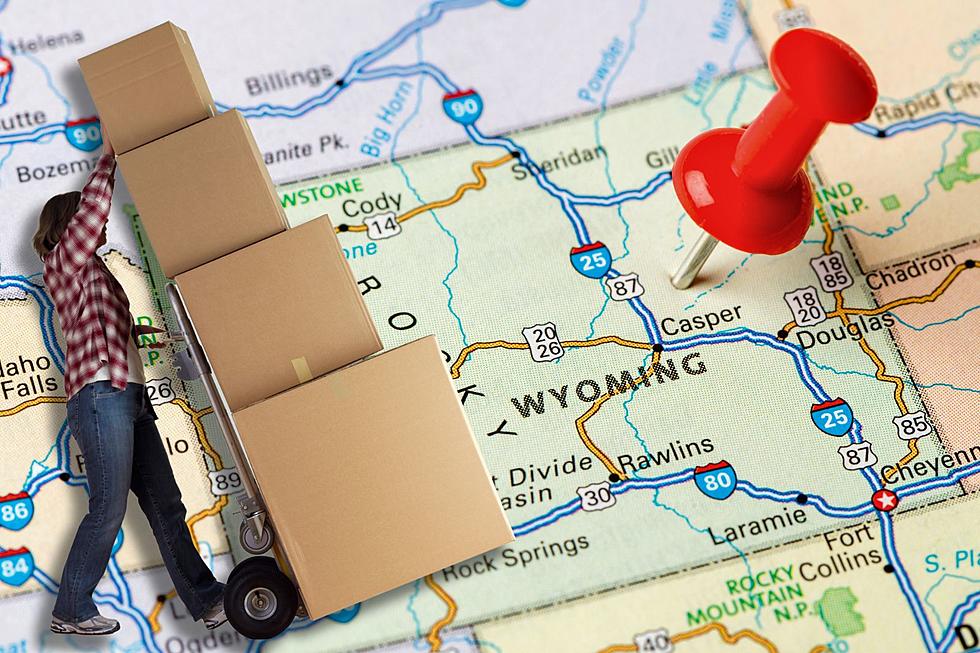
First 500 Wind Turbines Approved for Wyoming Wind Energy Project
The largest proposed onshore wind energy facility in North America got the green light Wednesday for the first of two phases that would build up to 1,000 wind turbines south of Rawlins.
The Bureau of Land Management announced the approval of the first 500 turbines for the Chokecherry Sierra Madre Wind Energy Project.
"As soon as we're able to issue the notice to proceed, construction can begin on those wind turbines," says BLM spokesman Brad Purdy.
The U.S. Fish and Wildlife Service also issued its record of decision Wednesday, indicating that it would issue an Eagle Take Permit for the project, run by Power Company of Wyoming, when final mitigation plans are provided.
When operational, the project will be capable of generating up to 3,000 megawatts of power -- enough to power nearly one million homes, according to a BLM news release.
At peak construction, the entire project will support an estimated 1,200 jobs and create over 100 permanent positions in operations and maintenance. The first phase will generate nearly $200 million in property-tax revenue during construction and over the first 20 years of operation.
Power Company of Wyoming estimates the first phase will also contribute $116 million from sales taxes and $118 million from a state wind-electricity tax over 20 years.
"It's a win for the State of Wyoming and for America as a whole," Purdy says.
The U.S. Fish and Wildlife Service's analysis of impact to bald and golden Eagles indicates that one to two bald eagles and 10-14 golden eagles per year would be harmed or killed by the project.
But as part of the project, Power Company of Wyoming will upgrade a number of power poles to bird-friendly standards. Power poles kill many golden eagles, and the Service says that the upgrades will save more eagles than the project is expected to kill during operation, resulting in a net benefit to golden eagles.
The Service, through that analysis, determined that it could issue eagle take permits for the project as requested, which included significant avoidance, minimization and compensatory mitigation measures. The permits would cover any unavoidable disturbance of eagles during construction as well as take of eagles during the development's ongoing operation for a five-year period.
The service is charged with administering the federal Band and Golden Eagle Protection Act.
"As the federal agency charged with implementing that law, the decision the U.S. Fish and Wildlife Service is announcing today demonstrates that by working closely with industry, we can develop our nation's wind resources in a way that conserves our extraordinary wildlife resources," said Noreen Walsh, director of the Service's Mountain-Prairie Region, in a statement.
Following a public comment period for the final environmental assessment issued in March for the first 500 turbines, the BLM found the project would have no new significant impact.
About half of the 220,000 acres associated with the project site are administered by the BLM, while the rest of the land is owned privately or by the state. The BLM says only a portion of the total land area would be used for or disturbed by the project, and no ground-disturbing activities associated with the turbines can begin until the BLM issues a right-of-way grant and a notice to proceed.
A third environmental analysis will be conducted on the second phase of the project, depending on when the Power Company of Wyoming wants to move forward, Purdy says.
"I think this is a very good project for the state of Wyoming and for the West in general," Purdy adds. "I think it goes to show that Wyoming is a leader nationally as far as energy production goes."
The BLM has approved 60 renewable energy projects on public lands since 2009. Those projects include 36 utility-scale solar facilities, 11 wind-energy projects and 13 geothermal plants. When completed, those projects will generate up to 15,567 megawatts of power.
More From 101.9 KING-FM








